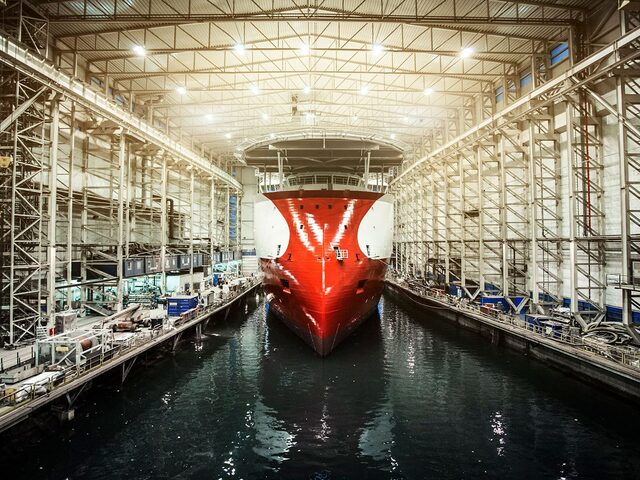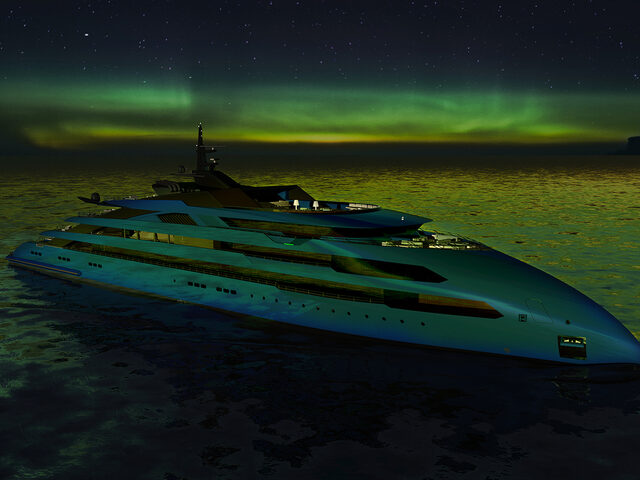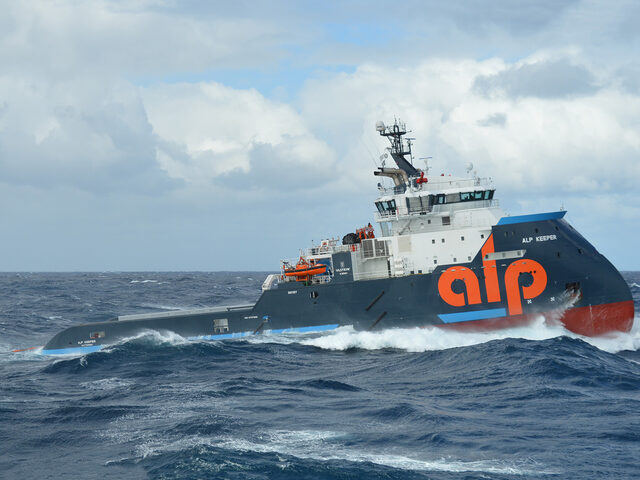Can ship design cure seasickness?
In October 2019, the first ULSTEIN X-BOW® polar expedition cruise vessel, 'Greg Mortimer', left Ushuaia for her inaugural voyage. She was heading for the dreaded Drake Passage to reach the northern part of Antarctica. Among those on board was a person who “gets seasick just by looking at water”, the diving instructor.

The diving instructor is Peter Szyszka. Some weeks before, the ship owning company had called upon Peter and summoned him to board the ‘Greg Mortimer’ in Cape Town. At that time, the vessel had recently been delivered from the construction yard in China and was on her way towards Ushuaia in Argentina.
Hesitated
Peter was not looking forward to the journey from South Africa across the open sea to Ushuaia.
“I have one problem; I get seasick looking at water. I have tried every single type of seasickness medication under the sun, and to a very, very small effect.”
Although Peter has been working in polar regions since 2001. Going to Antarctica or the Arctic, to cross the Drake Passage or the Denmark Strait, has always been a challenge to him.
Therefore, when his company asked him to join in on the transit from Cape Town to Ushuaia, he hesitated to accept the offer. “Eventually I did,” says Peter, “and when I came to Cape Town and saw the new X-BOW, ‘Greg Mortimer’, I was very curious.”
Peter's story in his own words:
Different-looking design to tackle rough conditions
The ‘Greg Mortimer’ looks quite different from other expedition cruise vessels. She is the first expedition cruise ship designed with the ULSTEIN X-BOW®, a design feature initially developed for offshore vessels operating in some of the roughest waters on the planet. Cruise vessels usually don’t head out in very bad weather, however, that does not mean that they never get to experience it.
As did the ‘Greg Mortimer’.
As did Peter.
Hit the first storm within 24 hours of departure
“Probably within 24 hours of departing quay in Cape Town we hit the first storm of the crossing. I was on a very minimum medication, I just took one seasickness tablet a day, and I was able to work. I was able to work welding, I was able to work grinding and installing new equipment on a ship in a storm where the waves were on average height 8-10 metres,” says Peter.
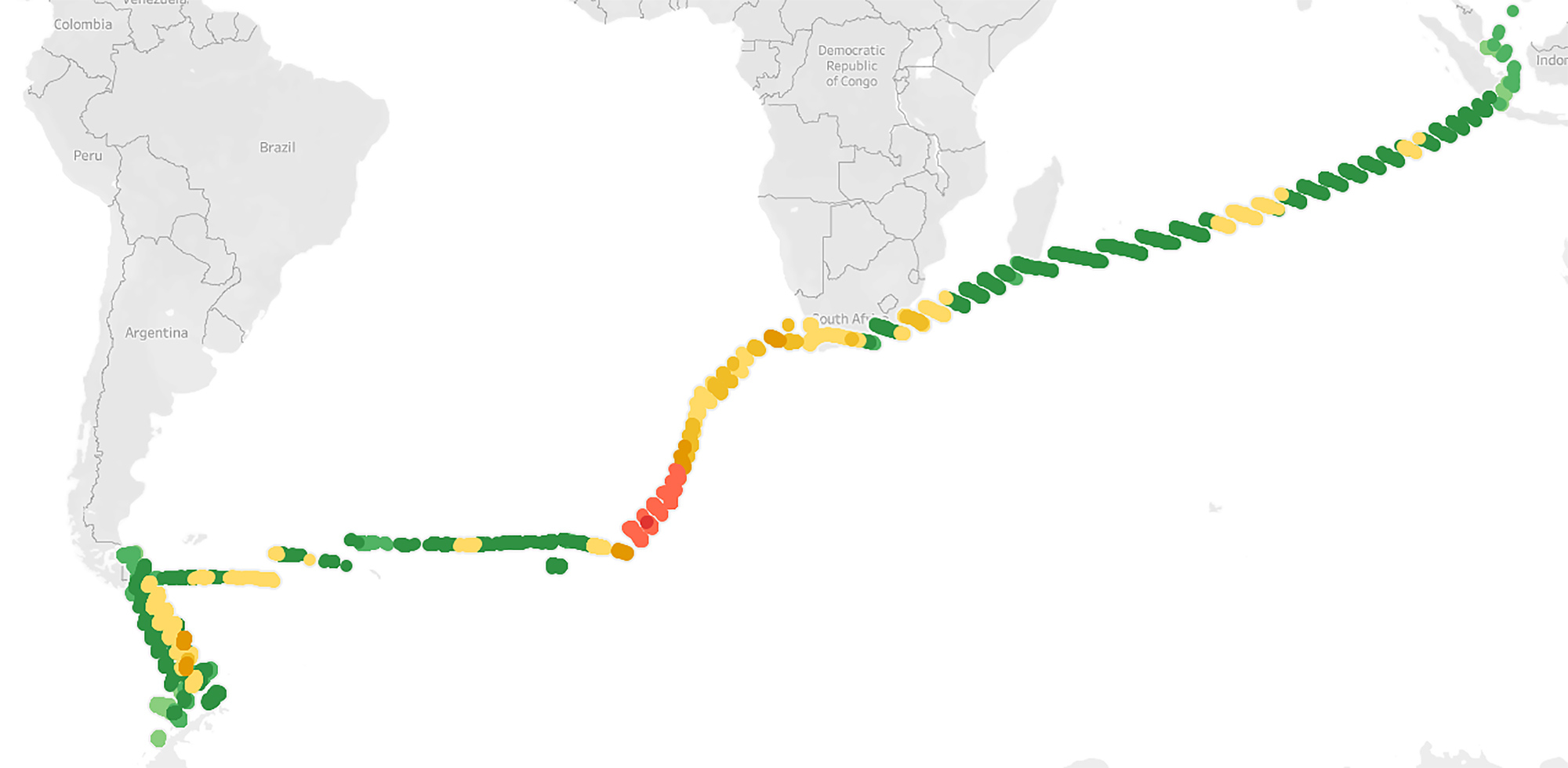
“She’s one, sweet ride”
The experience made a great impression on Peter, who states:
“It was absolutely spectacular! She’s one, sweet ride. I loved the trip and have since then travelled on the ‘Greg Mortimer’ to Antarctica and back, crossing the Drake Passage a couple of times, and we had an amazing experience. I love the X-BOW and I love the ‘Greg Mortimer’.”
The text above is a transcription of a video interview with Peter which was made on board the ‘Greg Mortimer’ during the inaugural Drake Passage crossing.
The captain's feedback
After the delivery of the Greg Mortimer, the captain took the ship from the construction yard in China and to Argentina. The vessel entered 10m high waves and strong winds during the crossing. This is the Captain's story: "I kept waiting for the slamming."
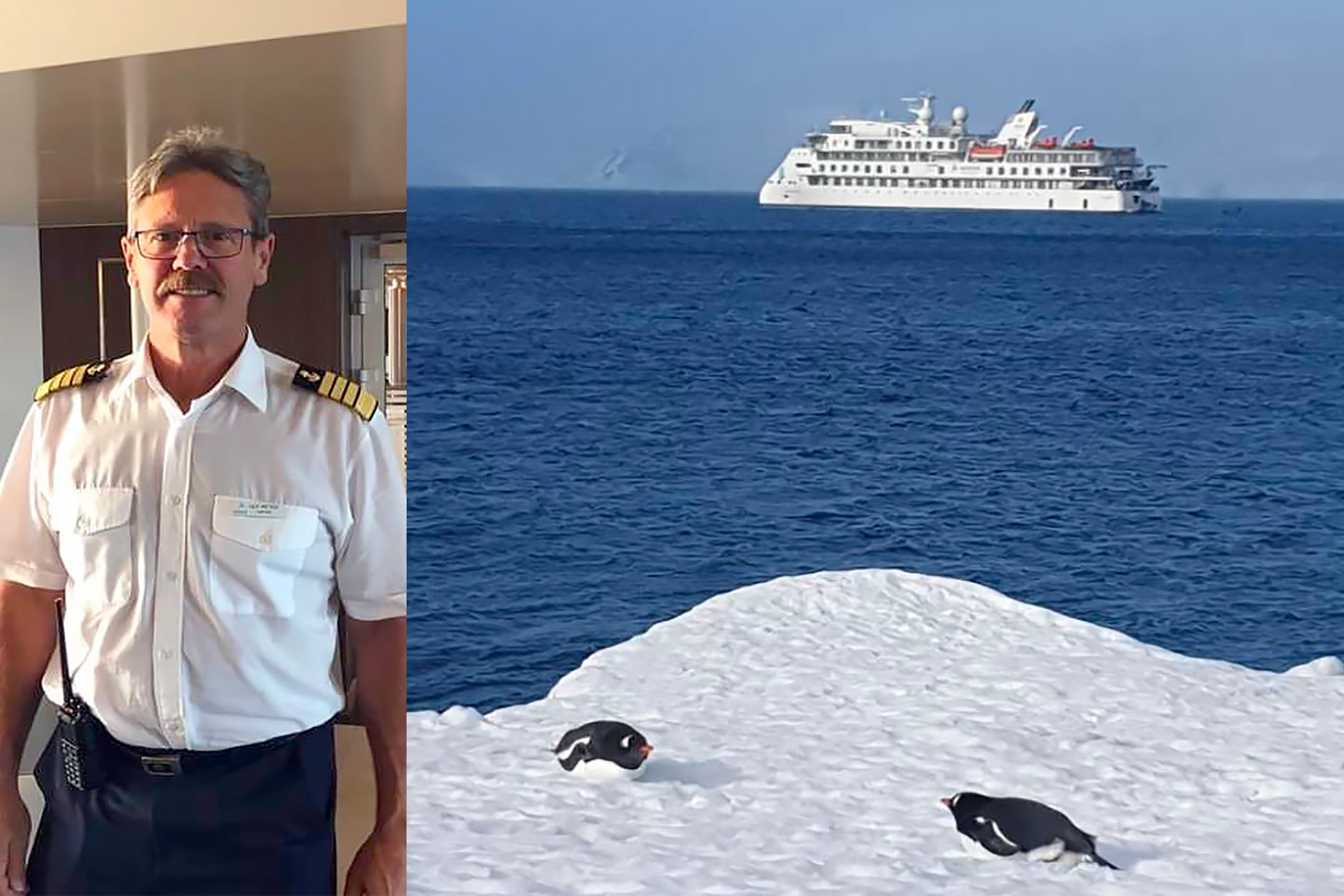
Can ship design cure seasickness?
As for the question in the heading; ship design in general, including the X-BOW hull line design, cannot cure or prevent seasickness, yet, it can influence it. Motion sickness comes as a result of the brain receiving conflicting messages and relates to a disturbance of the inner ear. When you are seated in your cabin and your body is still sensing the movements from the sea, it can cause seasickness.
We, as ship designers, can work purposefully to help avoid the perception of seasickness onboard vessels. The location of spaces along the length of the vessel, the response of the vessel to waves, current and wind, and the amount and quality of light and ventilation are some of the effective means and measures. The X-BOW is one of the design features that Ulstein has implemented since 2005 to improve the quality of life onboard vessels. The X-BOW improves the response of the vessel in waves. Lower motions and accelerations on waves result in increased comfort perceived in head seas, as the slamming and consequent vibrations are reduced.
Read other people’s experiences on the X-BOW.
The size of windows, and the location of public areas and passenger cabins also have a critical effect on the perception of seasickness. One detail, such as the positioning of the beds, can influence sleeping quality, and lack of sleep has an effect on seasickness. In MV ‘Greg Mortimer’, all the beds are longitudinally arranged to improve sleep.
The design of the ULSTEIN CX103 cruise design, which the ‘Greg Mortimer’ has been based on, has paid special attention to these elements. The location of the passenger cabins (green) and public areas (yellow) have been placed in the centre of the vessel, where the pitch motion is the lowest.
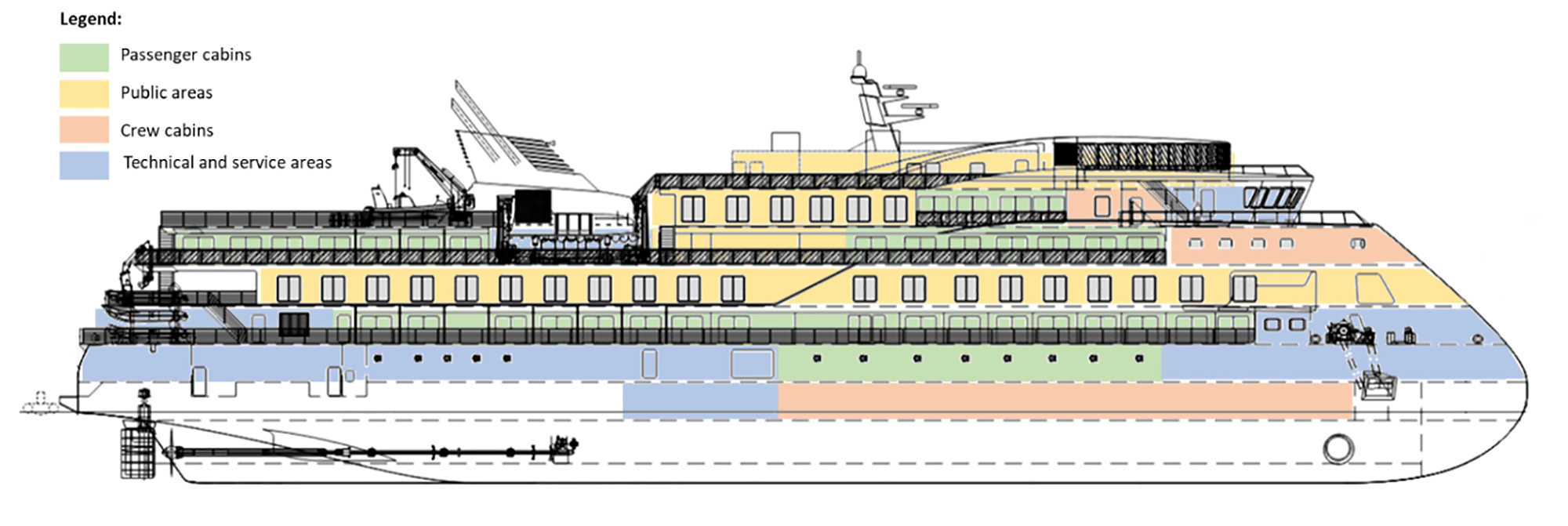
X-BOW®: Studies, documentation and experiences
X-BOW e-bookPlease contact us for more information
Companies
-
Ulstein Design & Solutions AS
P. O. Box 278,
Tel: +47 7000 8000
NO-6067 Ulsteinvik
Norway -
Ulstein Marine Systems (Shanghai) Co. Ltd
Room 2026, Building A, No. 500 Yunjin Road, Xuhui District, Shanghai 200232, China
Tel: +86 21 5489 3691
